Virgin Galactic launches Richard Branson to space in 1st fully crewed flight of VSS Unity
SPACEPORT AMERICA, N.M. — Early this morning (July 11), billionaire Richard Branson and five other crewmates briefly launched into space for the first fully crewed spaceflight of Virgin Galactic's SpaceShipTwo spaceplane.
At 8:40 a.m. local time (10:40 a.m. EDT; 1440 GMT), the crew of Virgin Galactic's Unity 22 test flight mission took off from the company's Spaceport America facility in New Mexico and flew just above the boundary of space, where the four passengers and two pilots experienced about four minutes of weightlessness.
It was "the experience of a lifetime," Branson said during a live broadcast of the flight. Branson, designated "Astronaut 001" for the Unity 22 mission, founded the Virgin Group of companies that includes Virgin Galactic.
The SpaceShipTwo vehicle, named VSS Unity, made a successful, crewed suborbital test flight to 282,000 feet (86 kilometers) above Earth's surface before gliding back down to Spaceport America for a smooth runway landing.
Related: What to know about Virgin Galactic's SpaceShipTwo Unity 22 launch
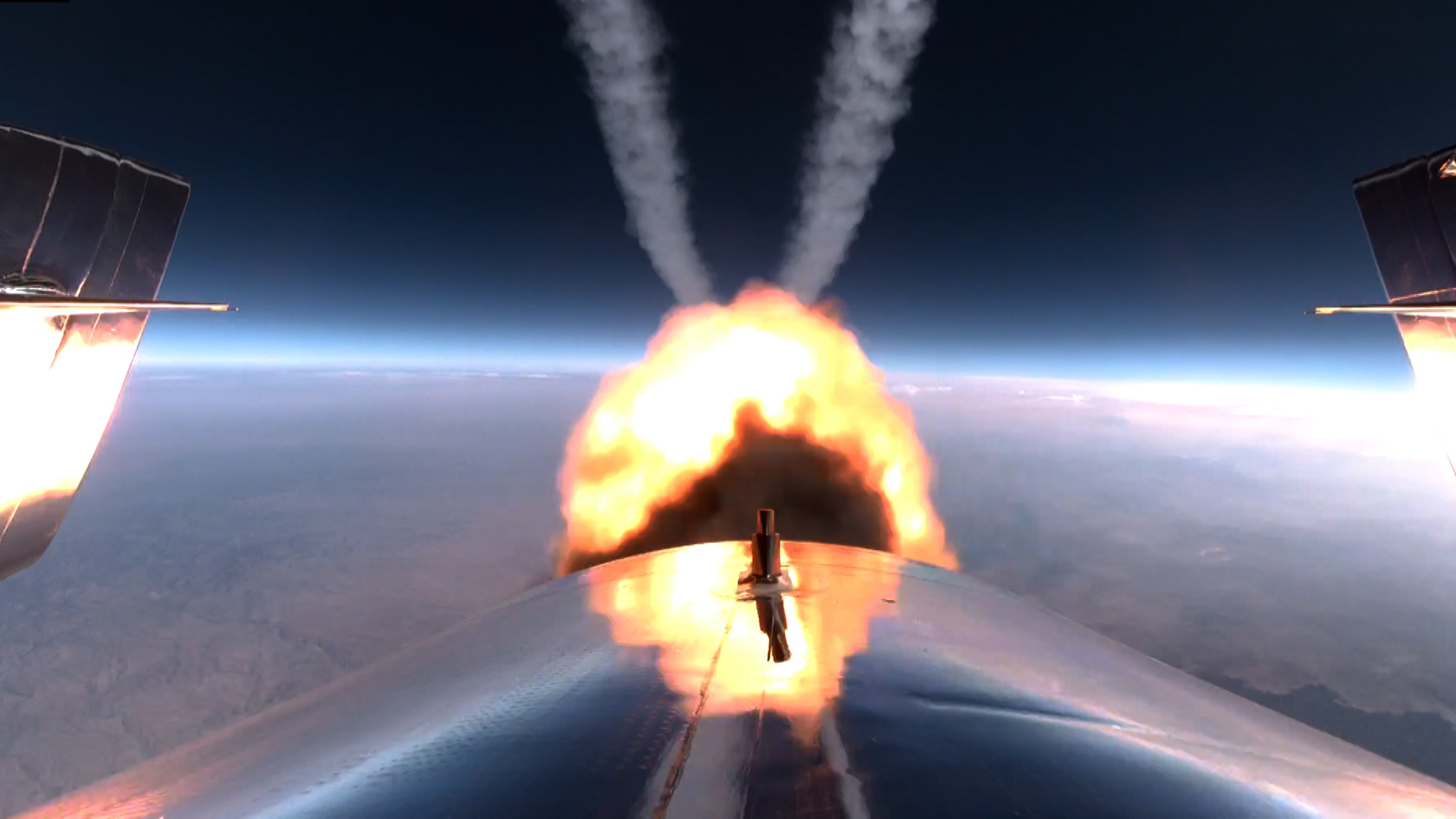

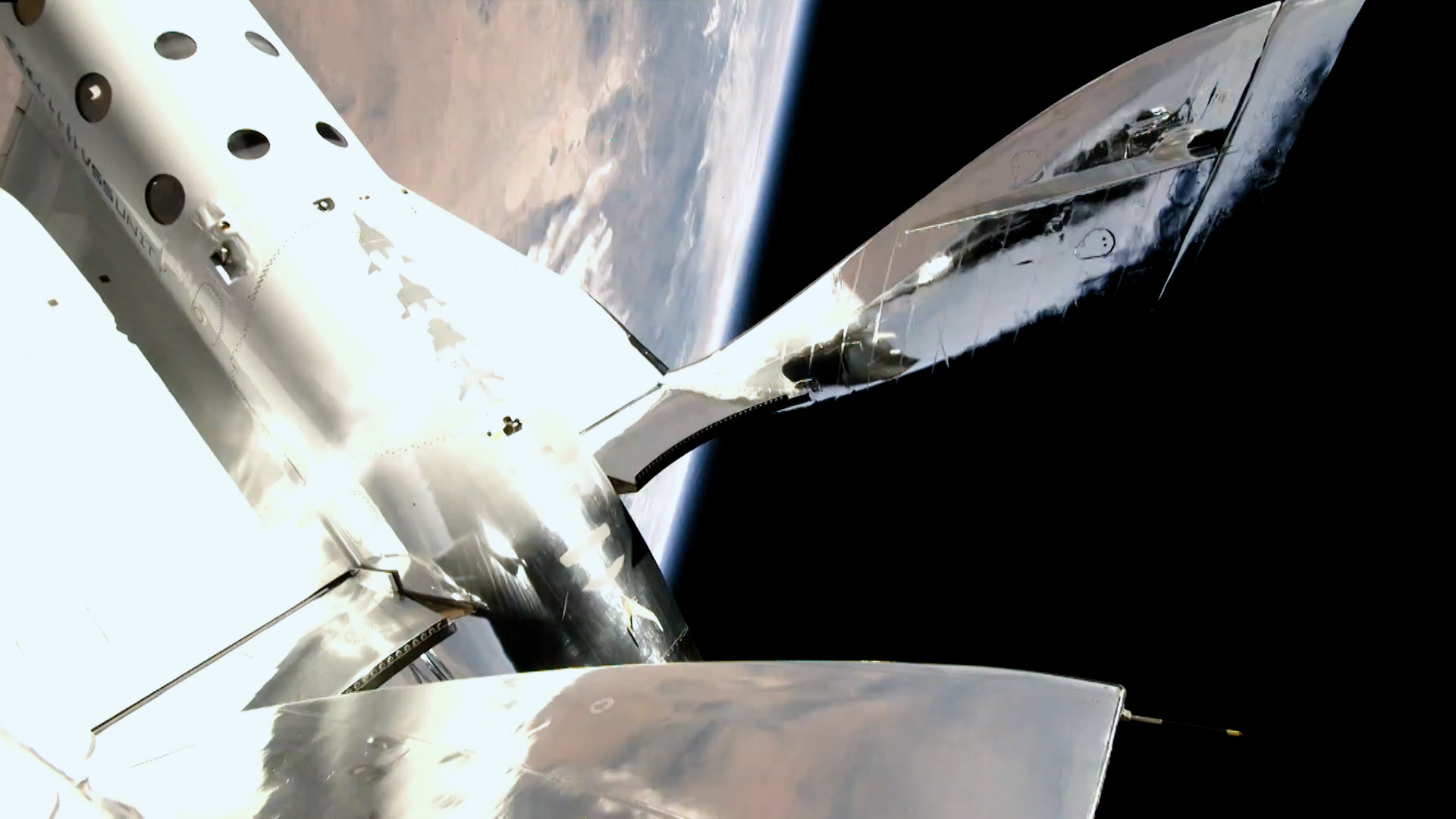

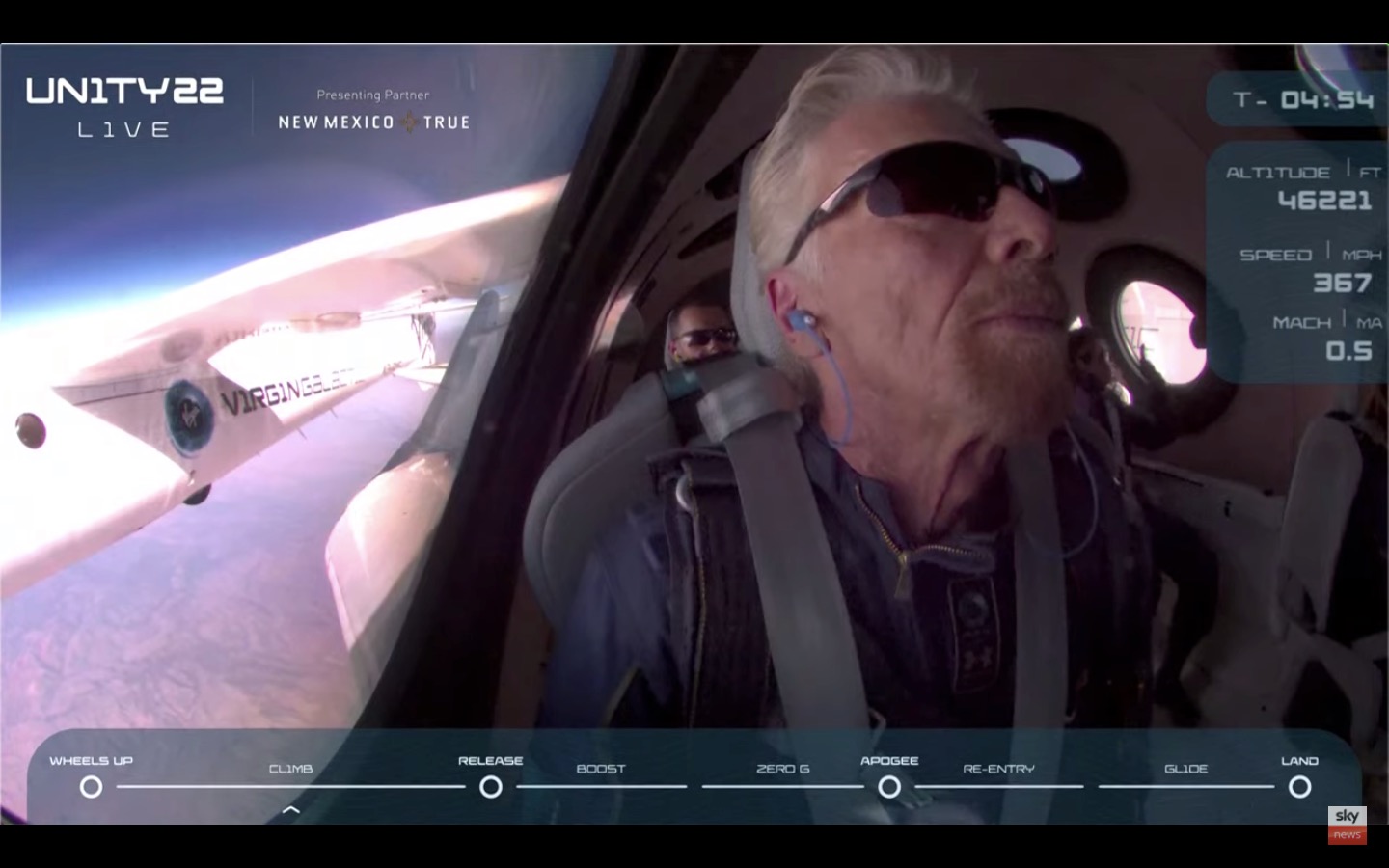
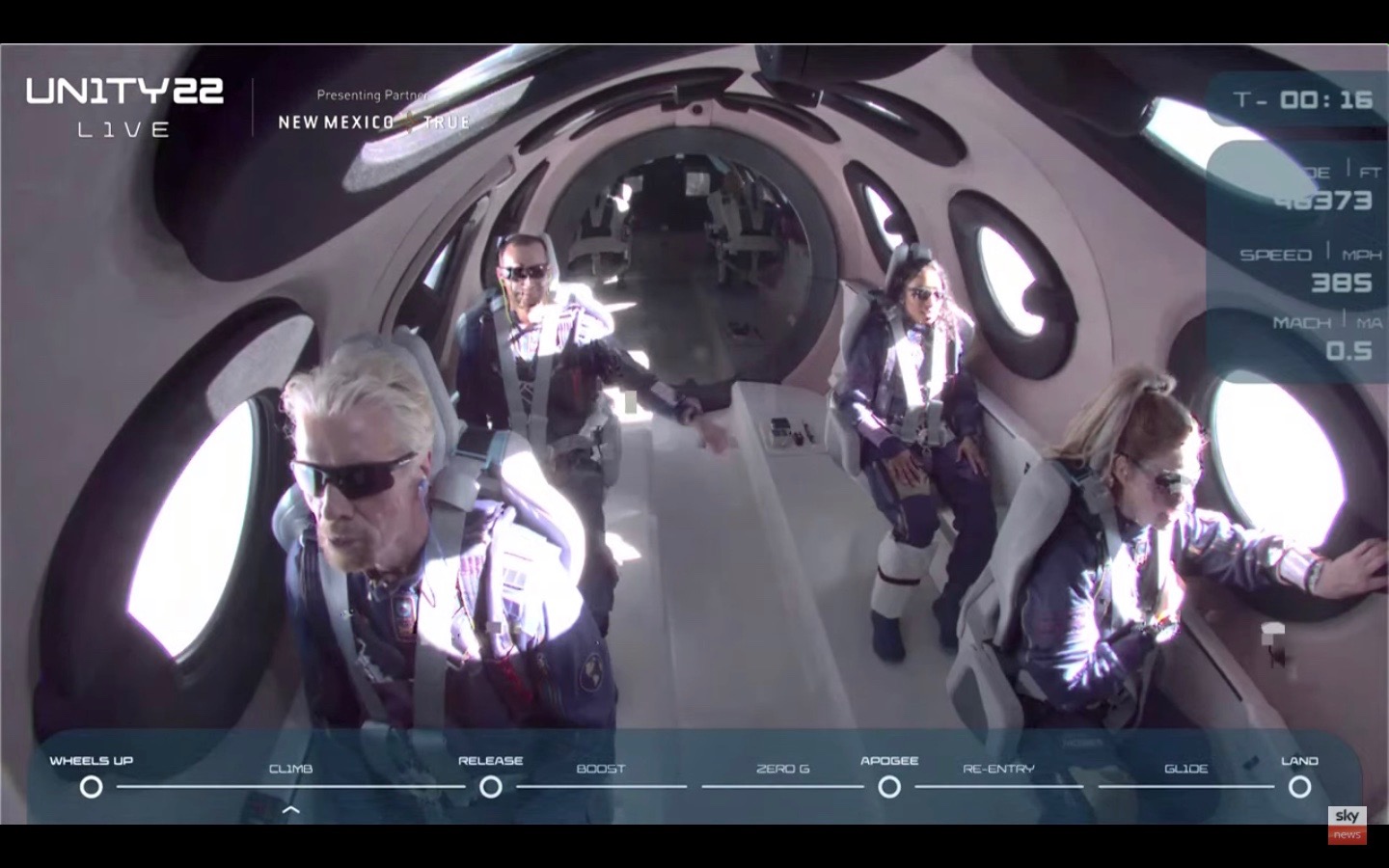
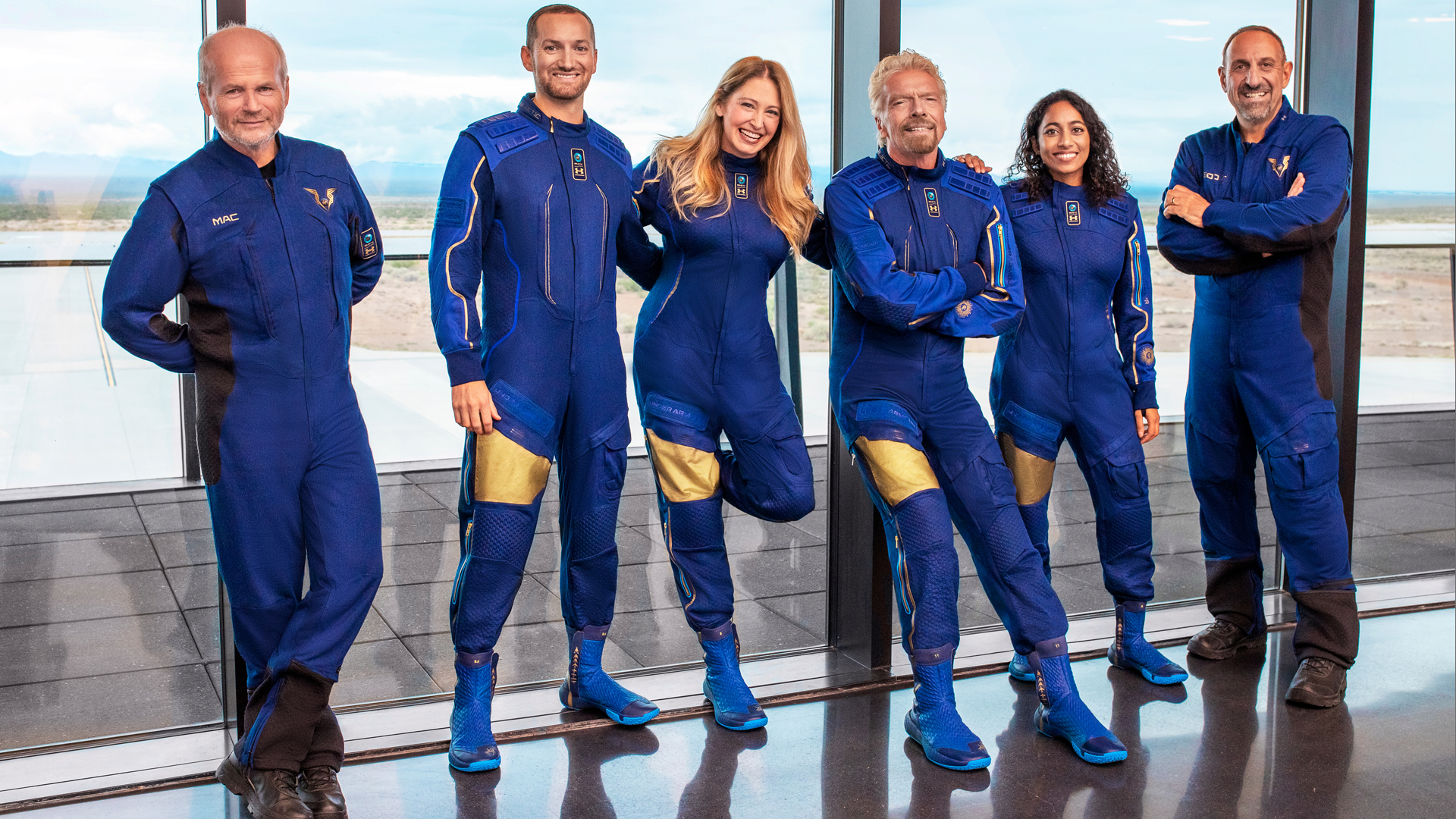
A flawless flight
This test flight is the company's fourth crewed spaceflight but the first to carry a full crew of two pilots and four mission specialists. In addition to Branson, the crew that flew today included Beth Moses, Virgin Galactic's chief astronaut instructor; Colin Bennet, the lead operations engineer at the company; and Sirisha Bandla, Virgin Galactic's vice president of government affairs and research operations. Pilots Dave Mackay and Mike Masucci rounded out the team.
The Unity 22 mission lifted off from Spaceport America with the company's VSS Unity spaceplane climbing to an altitude of 50,000 feet (15,000 meters) with the help of its "mothership" VMS Eve, a WhiteKnightTwo carrier plane. After reaching this altitude, VMS Eve let the space plane go and from there it rocketed up to 53 miles (86 km) above Earth's surface before returning to Earth and landing not too far from where it took off at Spaceport America.
Get the Space.com Newsletter
Breaking space news, the latest updates on rocket launches, skywatching events and more!
The mood on the ground was jubilant.
Virgin Galactic invited a crowd of guests to the launch, including customers with reservations for future flights (they're paying $250,000 a seat for the trip). One friend of Branson's, SpaceX CEO and founder Elon Musk, was in the audience and wished his fellow billionaire well. Singer Khalid debuted his new single "New Normal" after landing (Branson and his crew got to listen to it during their glide back to Earth), and comedian Stephen Colbert of The Late Show hosted the company's live webcast.
Branson even announced a new partnership between Virgin Galactic and Omaze to raffle off two free tickets to space. Finally, the first time flyers — Bandla, Branson and Bennett — each got special Virgin Galactic astronaut wings with a tiny SpaceShipTwo on them.
"We've been to space, everybody! " Branson cheered during a post-flight press conference. "So thrilling when a lifetime's dream comes true."
An early look at VSS Unity suggests a very smooth flight, said Mike Moses, Virgin Galactic's president of space missions and safety. About the only glitch was some garbled video and audio from inside the passenger cabin, which may be an antenna blockage issue, he said.
"Everything looked perfect in real time," Moses said, adding that a quick walkaround the vehicle revealed few flaws. "The ship looks pristine — no issues whatsoever."
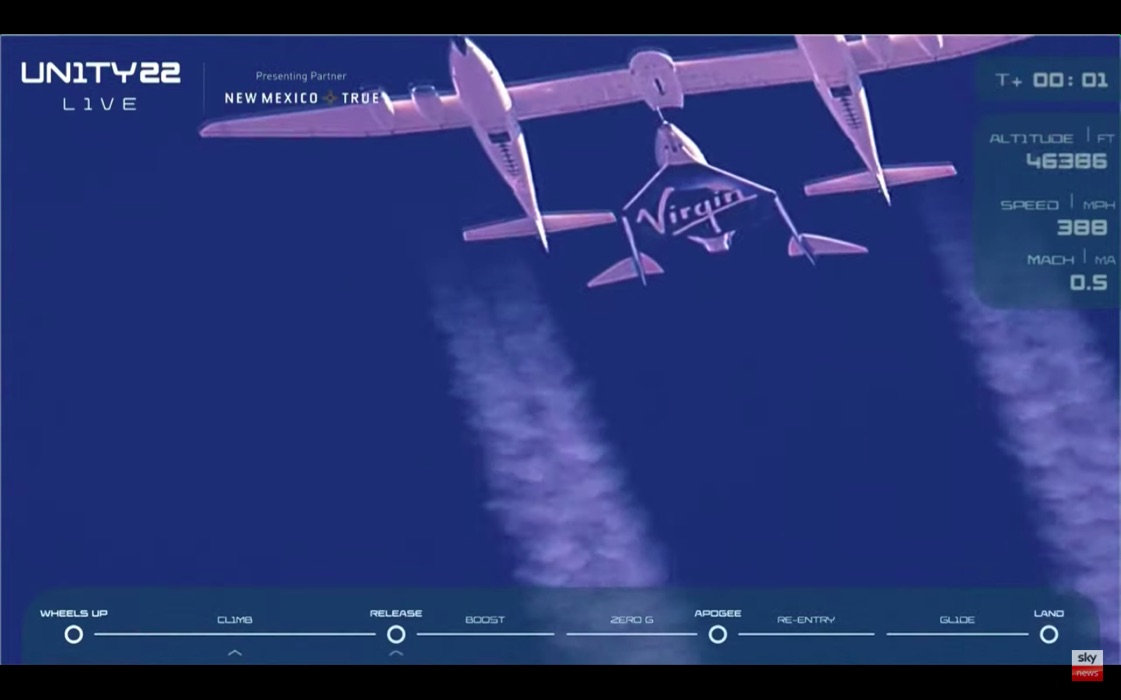
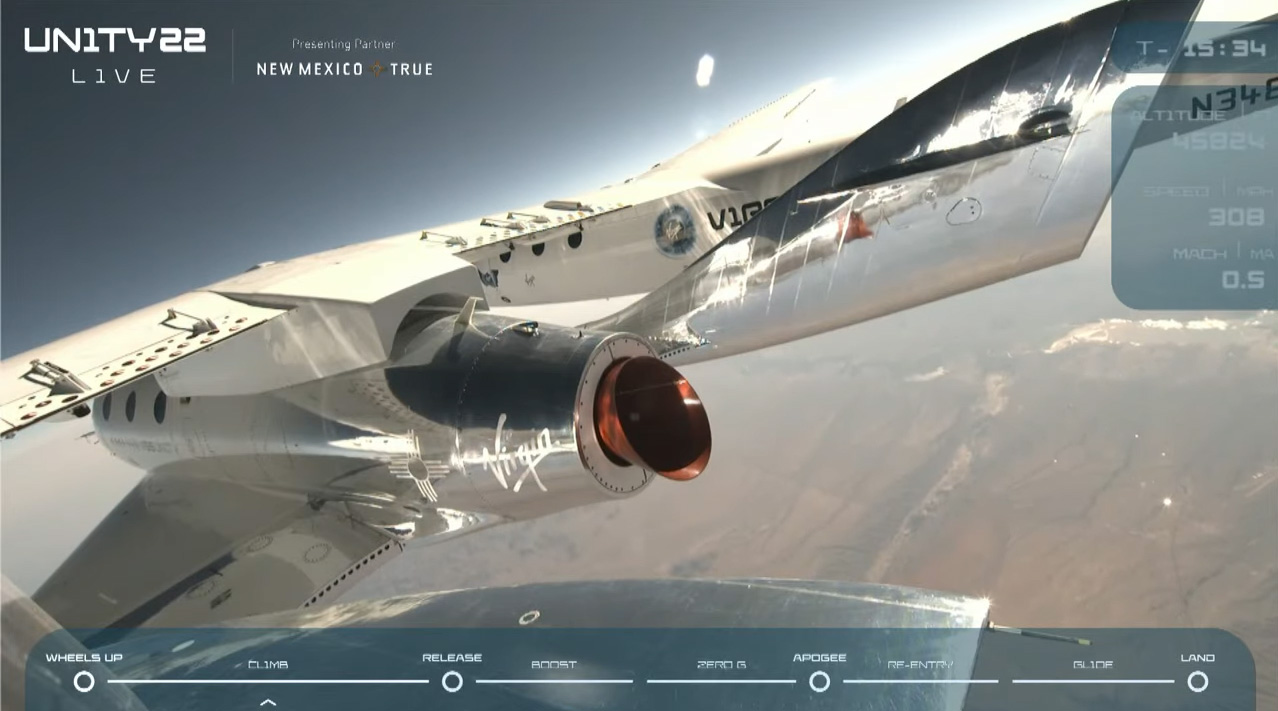
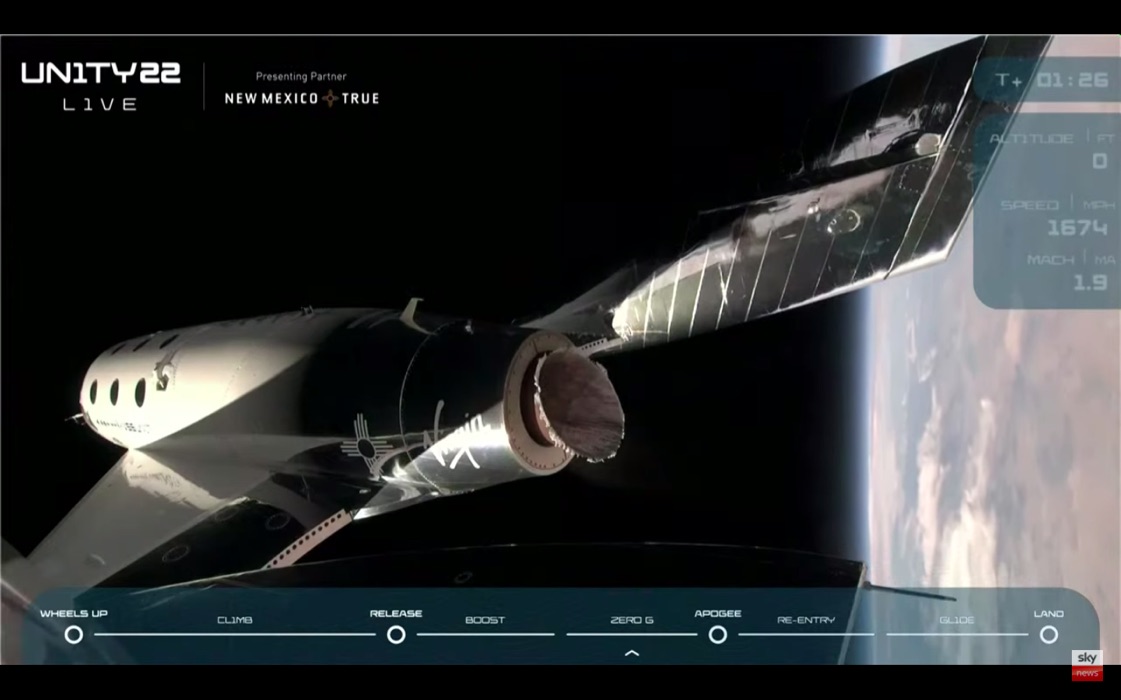

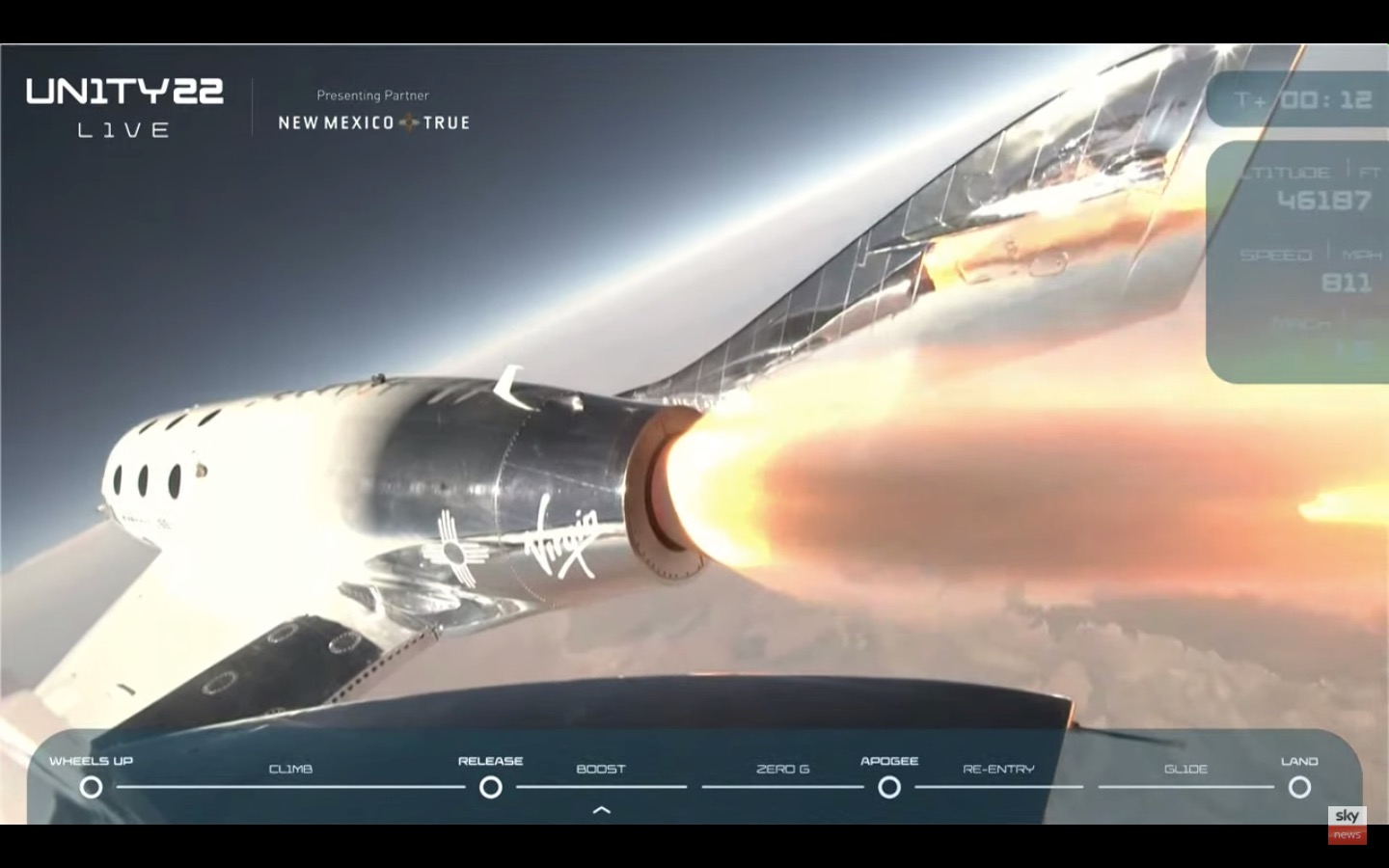
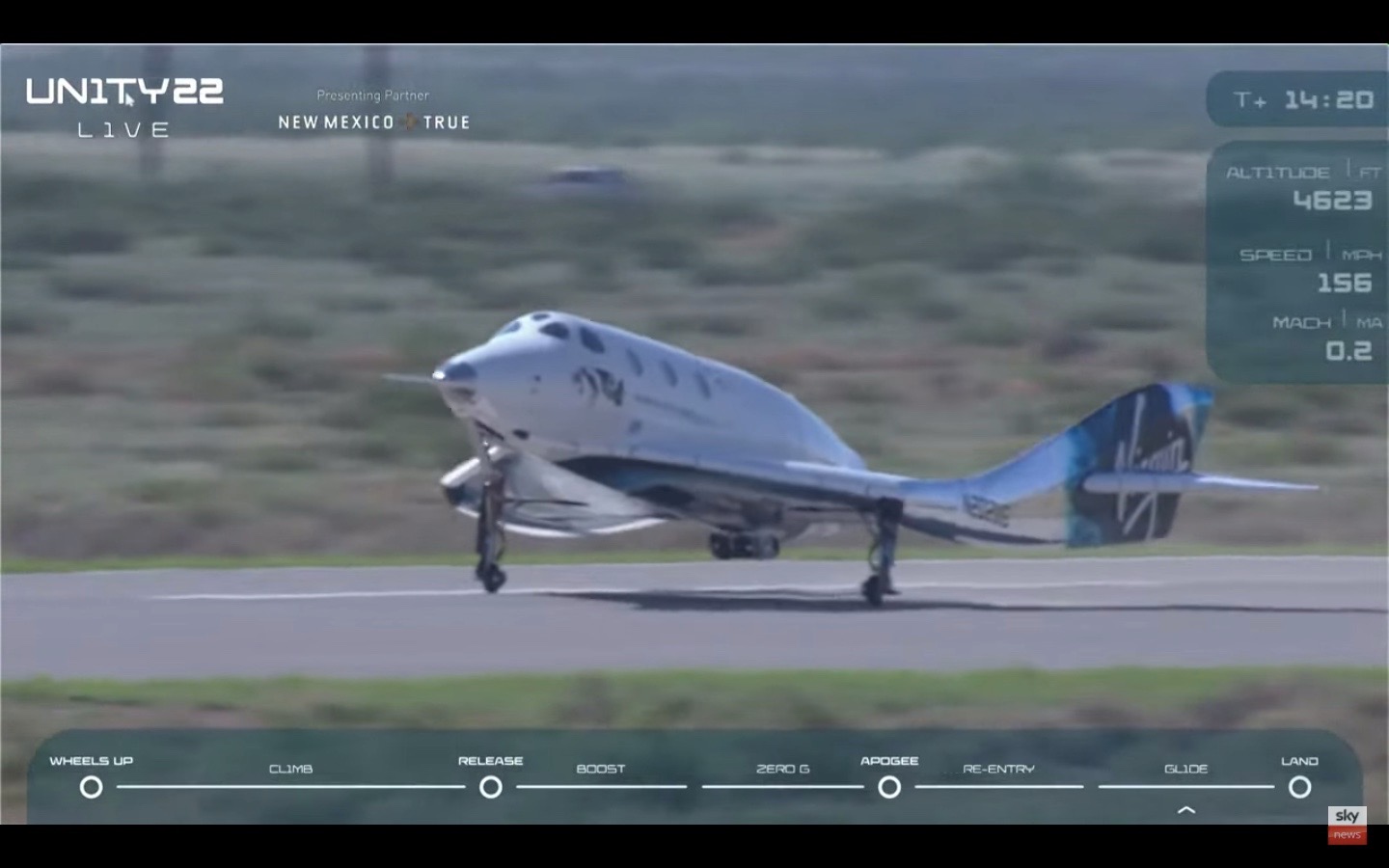
There has been some debate over whether this flight officially reached space. VSS Unity's achieved altitude is high enough for the crew on board to have earned astronaut wings by standards set by the U.S. military, the Federal Aviation Administration (FAA) and NASA, which set the boundary of outer space at 50 miles (80 km). However, it is below the Kármán line, another popularly recognized boundary of outer space, which begins at an altitude of 62 miles (100 km).
This difference was pointed out by Virgin Galactic competitor Blue Origin, which is launching its New Shepard crewed suborbital flight with its founder, Jeff Bezos, on July 20. This upcoming mission will pass the Kármán line.
A step closer to passenger launches
With the Unity 22 test flight, Virgin Galactic aimed for the crew to evaluate the "private astronaut experience," according to a statement from the company. The flight focused on "cabin and customer experience objectives," the statement shared, which include evaluating comfort and what the cabin feels like with a full crew, the experience of being weightless and viewing Earth from space, demonstrating how the crew might conduct research experiments and seeing how well the crew's training at Spaceport America prepared them for the mission.
Following this successful launch and landing, the crew will now inspect the vehicles and begin an extensive data review, according to the same statement. This review will help to inform the company's flight program and future missions like this. Virgin Galactic is aiming to launch two more crewed test flights before beginning full commercial service in 2022.
For Virgin Galactic, today's launch was a major milestone. Branson founded the company in 2004 after SpaceShipOne, a vehicle built by the company Scaled Composites and financed by the late billionaire Paul Allen, won the $10 million Ansari X Prize for reusable commercial spaceflight.
Branson tapped Scaled Composites to design SpaceShipTwo and its carrier plane, but the road to astronaut launches has been slow and painful.
A fatal ground accident in 2007 killed three Scaled Composites employees and in 2014, Virgin Galactic's first SpaceShipTwo, the VSS Enterprise, broke apart during a powered test flight. That tragic accident, attributed to pilot error, killed one pilot and seriously injured another, leading Virgin Galactic to develop new safety systems to prevent it from happening again.
With today's flight, Virgin Galactic appears to be poised to meet its 2022 target for passenger flight.
"I have dreamt about this moment since I was a child, but going to space was more magical than I ever imagined," Branson wrote of the experience.
Editor's note: This story was updated was 4:45 pm ET with details from Virgin Galactic's post-launch press conference.
Email Chelsea Gohd at cgohd@space.com or follow her on Twitter @chelsea_gohd. Follow us on Twitter @Spacedotcom and on Facebook.
Join our Space Forums to keep talking space on the latest missions, night sky and more! And if you have a news tip, correction or comment, let us know at: community@space.com.

Chelsea “Foxanne” Gohd joined Space.com in 2018 and is now a Senior Writer, writing about everything from climate change to planetary science and human spaceflight in both articles and on-camera in videos. With a degree in Public Health and biological sciences, Chelsea has written and worked for institutions including the American Museum of Natural History, Scientific American, Discover Magazine Blog, Astronomy Magazine and Live Science. When not writing, editing or filming something space-y, Chelsea "Foxanne" Gohd is writing music and performing as Foxanne, even launching a song to space in 2021 with Inspiration4. You can follow her on Twitter @chelsea_gohd and @foxannemusic.









